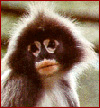|
Wildlife
The state receives an average rainfall of about 2100 mm per year
and the temperature in summer is between 20 to 36 degree Celsius
and in winter between 7 and 27 degree Celsius. It has an area of
around 10,492 sq km and almost two-third of the area of the state
is forested where different species of trees, orchids, birds and
wildlife are found. There are four sanctuaries in the state namely,
Rowa wildlife sanctuary, Sepahijala wildlife sanctuary, Trishna
wildlife sanctuary and Gumti wildlife sanctuary. The crab-eating
mongoose, which was last sighted about 72 years ago in India, can
be seen at the Sepahijala wildlife sanctuary.
The Sepahijala Wildlife
The Sepahijala Wildlife Sanctuary in Tripura is at a distance of
35 km from Agartala and the NH 44. Tripura Sepahijala Wildlife Sanctuary
is spread over an area of 18.53 sq km and boasts of a rich collection
of wildlife particularly of birds and primates. One can appreciate
both in-situ and ex-situ conservation of flora and fauna at Sepahijala
Wildlife Sanctuary. The Sepahijala Wildlife Sanctuary in Tripura
is the hot spot of bio-diversity with abundant stock of flora, fauna,
birds, etc.
The Landscape
Botanical garden, zoo, a boating facility in the lake and the various
species of trees attract visiting tourists from all over. The landscape
is lush green with stokepile of various vegetations. Agar (aggreria
agglocha) (the state tree), Nageshwar ( Mesua ferrea- state flower),
Dukul ( the green Imperial pegion-state bird) and groups of Spectacled
langur ( Phary’s leaf monkey-State animal) can easily be sighted
inside the sanctuary area.
The Flora
The sanctuary is rich in flora. The The Sepahijala Wildlife Sanctuary
in Tripura has 456 plant species of monocotyledon and dicotyledon.
Trees of Sal, Chamal, Garjan and Kanak exist predominantly. The
secondary species consist of Pichla, Kurcha, Awla, Bahera, Hargaja,
Amlaki, Bamboos and grasses. Sanctuary has the 4489 cum per ha.of
timber biomass. Sanctuary has abundant Rauwalfia serpentina and
home to other endangered and endemic species.
The Fauna
There are 5 species of primates in this sanctuary. The crab eating
Mongoose which was last sighted about 72 years ago in India has
been discovered again in this sanctuary. The sanctuary has been
planned as both a wildlife sanctuary and as an academic as well
as research cen tre. tre.
Presbytis, or spectacled langur, an endemic species of Tripura
is abundant here. Tropical moist deciduous Forest of Sepahijala
harbors five different species of primates like Rhesus macaque,
Pigtailed macaque, Capped langur, Spectacled langur, slow lories
and a lot of many other wild animals. One can easily come across
these wild animals in the forest of Sepahijala Wildlife Sanctuary.
At one time the sanctuary was marked for varieties of wild animals
including leopard, clouded leopard, jungle fowl, and civets, barking
deer, wild pig.
The Birds
There are about 150 species of birds in this sanctuary. During winter
lots of migratory birds visit the sanctuary. It is absolutely thrilling
to watch them. Wonderful habitat of Sepahijala attracts lot of migratory
birds of which lesser whistling teal, white ibis, open billed stork
is of prime importance.
Sepahijala is a small wildlife sanctuary located about 25 km from
Agartala. This is the only sanctuary of the state, covering an area
of 18.53 sq. km. More than 150 species of residential birds, migratory
birds are found here. There is also a lake inside the sanctuary
spread over an area of 3 sq. km. Boating facilities into the lake
is available for tourist.
This sanctuary is also a beautiful picnic spot. The added attraction
for tourist are, an orchid garden, botanical garden, zoo, elephant
joy-riding and boating in the lake. There is also a toy train having
running track of 1.5 km.Top
Rowa Wildlife Sanctuary
The Rowa Wildlife Sanctuary, situated in the north of the district,
can be approached from Panisagar and is adjacent to the National
Highway. Rowa Wildlife Sanctuary in Tripura is a small wildlife
sanctuary covering an area of 85'85 hectares and it is one of the
few remains of the natural forests left. This sanctuary is easily
accessible to the tourists from all around. Rowa Wildlife Sanctuary
provides plenty of scope for study by the botanists, ecologists,
environmentalist and students of wildlife system.
The Ecosystem of the Rowa Wildlife Sanctuary
The Tripura Rowa Wildlife Sanctuary houses more than 150 species
of birds, wild beasts and primates. The sanctuary with bountiful
of forest reserves, including both botanical and zoological is worth
a visit. It is the most ideal destination for the tourists, who
are more inclined towards eco-tourism. The forest is rich with a
large number of economic plants such as medicinal & aromatic,
treat fodders, fruit producing trees, oil-seed producing trees,
spices & orchids and other ornamental plants.
Best time to Travel : Through out
the year.
Weather Conditions : Hot & Humid,
pleasant in winters.
Location : The Rowa Wildlife Sanctuary
in Tripura is located in the northern district of Tripura, India.
Top
Gumti Wildlife Sanctuary
Gumti Wildlife Sanctuary is the second sanctuary of the South Tripura
district located in the south-east corner of the state. Its area
is 389.54 km. Close to the sanctuary, there is a vast water reservoir
covering almost 300 sq km of an area. This water reservoir attracts
several resident and migratory water birds. Gumti Wildlife Sanctuary
in Tripura has Elephants, Bison, Sambar, Barking deer, Wild goat
or Sarow apart from many other animals and reptiles. This is a very
ideal destination for the tourists interested in eco-tourism. The
sanctuary boasts of a rich flora and fauna. One can find numerous
medical and therapeutical botanical species in abundance in the
surroundings of the sanctuary.
Best time to Travel : Through out
the year.
Weather Conditions : Hot & Humid,
pleasant in winters.
Location : Located in the south
eastern corner of Tripura in India.
Top
Information on wildlife tours, wildlife viewing, wildlife park and nature of Tripura - india
|








 tre.
tre.
